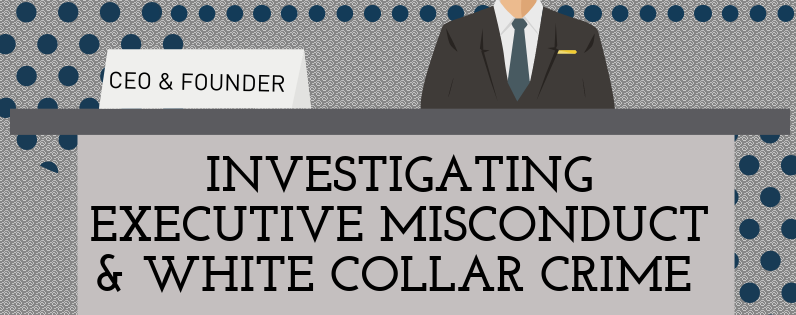The Biggest Corporate Scandals of the Decade (2010 – 2019)
It’s mind-boggling to think that some of the most controversial scandals in our country’s history have taken place only in the last decade. Corporate scandal is a hot media item, with the misbehavior of employees at all levels facing public scrutiny. Information on corporations and their corporate culture is more visible than ever as experts […]
10 Steps to Conducting Internal Investigations
When conducting an internal investigation, it’s imperative that the investigation be comprehensive and impartial from the beginning. Depending on the size and resources of the company, this is not always possible. Corporate investigations, while necessary, can often be a monumental burden to a small business or organization. Many medium to small businesses/organizations do not have […]
Corporate Culture Audits: Why Hire a Private Investigator?

When corporations make the investment to evaluate their corporate culture, it’s important that they choose a vendor who offers a comprehensive audit program. With the rise of the #MeToo movement, the Equal Opportunity Commission (EEOC) saw an overall increase of 13.6% of sexual harassment filings in 2018. That’s not counting other filings for discrimination based […]
Sexual Harassment & Corporate Culture Audits
The #MeToo movement has fundamentally changed the conversation around reporting and documenting allegations of sexual harassment in the workplace. Victims of this harassment have previously been restricted by a pervasive culture of silence and shame within the workplace—a culture where reporters are vilified and characterized as dishonest people with an axe to grind. Now, with […]
Corporate Culture Audit: What to Expect During an Audit
Pervasive internal issues are the malignancies that contribute to the decline of any corporation. While they come in many shapes and iterations, issues like communication, employee engagement, and employee relations can quickly derail a corporation’s mission. That’s why corporations across the country are electing to undergo corporate culture audits in order to get a full […]
Corporate Structure is Not Corporate Culture
The biggest mistake executives make when trying to improve their corporate culture… The corporate culture within any company, without question, effects their bottom-line day to day. Just to name a few avenues, this occurs through operations, interpersonal relationships between employees, and a level of engagement from leadership that requires consistent enforcement of their established mission […]
How Healthy Corporate Culture Stops Whistle-blowers
The word whistle-blower can trigger many different feelings for Americans. Much of the nation has very dichotomous feelings about whistle-blowers, either lauding them as heroes, or vilifying them as saboteurs. Individuals at the center of these whistle-blower stories are cast in different roles depending on the route that external media decides to take. While spectators […]
Investigating Executives & White Collar Crime

Don’t let executive misconduct ruin your corporation… When it comes to running a business, the executives who are the visionaries and decision-makers that shape a company should always remain above reproach. White collar crimes have the potential to pull a business up from the root with devastating consequences. Unfortunately, Americans know from media coverage and […]
BACKGROUND CHECKS
Rooting Out Thieves in the Workplace Most of us have dealt with a thief during our lifetime. Devious and sneaky, some thieves behave as if stealing is an art. It is usually a theft exposing them; however, many times, they can strike numerous times before getting caught. When theft happens in the workplace, it can […]
Intelligence in Business (OSINT)
By: Kym Pasqualini, Feature Crime Writer for Lauth Investigations Open-source intelligence (OSINT) is the collection of data from publicly available sources to be used in the context of intelligence. Within the intelligence world, the term “open” refers to overt, meaning sources available publicly, opposed to clandestine or covert sources. OSINT is not a new concept. […]